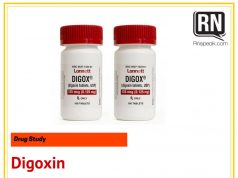Sodium Bicarbonate Overview
Sodium Bicarbonate is a versatile gastrointestinal agent, antacid, and fluid and electrolyte balance agent commonly used for various conditions. It is available in different forms, including tablets and injections, making it adaptable for diverse medical needs.
Generic Name:
Sodium Bicarbonate
Brand Name:
Sodium Bicarbonate
Classifications:
- Gastrointestinal agent
- Antacid
- Fluid and electrolyte balance agent
Pregnancy Category:
C
Availability:
- 325 mg, 520 mg, 650 mg tablets
- 4.2%, 5%, 7.5%, 8.4% injection
Actions:
Short-acting, potent systemic antacid. Rapidly neutralizes gastric acid to form sodium chloride, carbon dioxide, and water. After absorption, plasma alkali reserve is increased, and excess sodium and bicarbonate ions are excreted in urine, thus rendering urine less acid. Not suitable for treatment of peptic ulcer because it is short-acting, high in sodium, and may cause gastric distention, systemic alkalosis, and possibly acid-rebound.
Therapeutic Effects:
Short-acting, potent systemic antacid; rapidly neutralizes gastric acid or systemic acidosis.
Uses:
- Systemic alkalinizer to correct metabolic acidosis (as occurs in diabetes mellitus, shock, cardiac arrest, or vascular collapse)
- To minimize uric acid crystallization associated with uricosuric agents
- To increase the solubility of sulfonamides
- To enhance renal excretion of barbiturate and salicylate overdosage
- Commonly used as home remedy for relief of occasional heartburn, indigestion, or sour stomach
- Used topically as paste, bath, or soak to relieve itching and minor skin irritations such as sunburn, insect bites, prickly heat, poison ivy, sumac, or oak
- Sterile solutions used to buffer acidic parenteral solutions to prevent acidosis
- Buffering agent in many commercial products (e.g., mouthwashes, douches, enemas, ophthalmic solutions)
Contraindications:
- Prolonged therapy with sodium bicarbonate
- Patients losing chloride (as from vomiting, GI suction, diuresis)
- Heart disease, hypertension
- Renal insufficiency
- Peptic ulcer
- Pregnancy (category C)
Cautious Use:
- Edema, sodium-retaining disorders
- Lactation
- Older adult patients
Route & Dosage:
Antacid:
- Adult: PO 0.3–2 g 1–4 times/d or 1/2 tsp of powder in a glass of water
Urinary Alkalinizer:
- Adult: PO 4 g initially, then 1–2 g q4h
- Child: PO 84–840 mg/kg/d in divided doses
Cardiac Arrest:
- Adult: IV 1 mEq/kg of a 7.5% or 8.4% solution initially, then 0.5 mEq/kg q10min depending on arterial blood gas determinations (8.4% solutions contain 50 mEq/50 mL), give over 1–2 min
- Child: IV 0.5–1 mEq/kg of a 4.2% solution q10min depending on arterial blood gas determinations, give over 1–2 min
Metabolic Acidosis:
- Adult: IV 2–5 mEq/kg by IV infusion over 4–8 h
- Infant: IV 2–3 mEq/kg/d of a 4.2% solution over 4–8 h
Administration:
Oral:
- Do not add oral preparation to calcium-containing solutions.
Topical:
- Follow manufacturer’s directions: Bath or soak, 1/2 cup or more into a tub of warm water; Foot soak, 4 tbsp/L(qt) warm water; soak 5–10 min; Paste, 3 parts sodium bicarbonate to 1 part water.
- Note: Solutions in water slowly decompose; decomposition is accelerated by agitating or warming the solution.
Intravenous:
- Prepare IV Infusion: May give 4.2% (0.5 mEq/ml) and 5% (0.595 mEq/ml) NaHCO3 solutions undiluted. Dilute 7.5% (0.892 mEq/ml) and 8.4% (1 mEq/ml) solutions with compatible IV solutions. Dilute to at least 4.2% for infants and children.
- Administer IV Infusion: Give a bolus dose only in emergency situations. Usually, the rate is 2–5 mEq/kg over 4–8 h; do not exceed 50 mEq/h. Stop infusion immediately if extravasation occurs. Severe tissue damage has followed tissue infiltration.
Adverse Effects:
- GI: Belching, gastric distention, flatulence.
- Metabolic: Metabolic alkalosis; electrolyte imbalance: sodium overload (pulmonary edema), hypocalcemia (tetany), hypokalemia, milk-alkali syndrome, dehydration.
- Other: Rapid IV in neonates (Hypernatremia, reduction in CSF pressure, intracranial hemorrhage).
- Skin: Severe tissue damage following extravasation of IV solution.
- Urogenital: Renal calculi or crystals, impaired kidney function.
Nursing Implications:
Assessment & Drug Effects:
- Be aware that long-term use of oral preparation with milk or calcium can cause milk-alkali syndrome: Anorexia, nausea, vomiting, headache, mental confusion, hypercalcemia, hypophosphatemia, soft tissue calcification, renal and ureteral calculi, renal insufficiency, metabolic alkalosis.
- Lab tests: Urinary alkalinization: Monitor urinary pH as a guide to dosage (pH testing with nitrazine paper may be done at intervals throughout the day and dosage adjustments made accordingly).
- Lab tests: Metabolic acidosis: Monitor patient closely by observations of clinical condition; measurements of acid-base status (blood pH, Po2, Pco2, Hco3-, and other electrolytes, are usually made several times daily during acute period).
- Observe for signs of alkalosis (over-treatment).
- Observe for and report S&S of improvement or reversal of metabolic acidosis.
Patient & Family Education:
- Do not use sodium bicarbonate as an antacid. A nonabsorbable OTC alternative for repeated use is safer.
- Do not take antacids longer than 2 weeks except under advice and supervision of a physician. Self-medication with routine doses of sodium bicarbonate or soda mints may cause sodium retention and alkalosis, especially when kidney function is impaired.
- Be aware that commonly used OTC antacid products contain sodium bicarbonate: Alka-Seltzer, Bromo-Seltzer, Gaviscon.
- Do not breastfeed while taking this drug without consulting a physician.
References
- Wong, E. K., Dunn, T. E., Beaver, B. P., Neronha, Z. J., & Chuu, A. (2023). Current Evidence Surrounding the Use of Sodium Bicarbonate in the Critically Ill Patient. Current Emergency and Hospital Medicine Reports, 11, 26-34. Retrieved from https://link.springer.com/article/10.1007/s40138-023-00260-9
- Grgic, J., Grgic, I., Del Coso, J., Schoenfeld, B. J., & Pedisic, Z. (2021). Effects of sodium bicarbonate supplementation on exercise performance: an umbrella review. Journal of the International Society of Sports Nutrition, 18, 71. Retrieved from https://jissn.biomedcentral.com/articles/10.1186/s12970-021-00469-7
- SciTechDaily. (2023). Baking Soda Saves the World: New Additive in Concrete Mix Could Slash Carbon Emissions.







